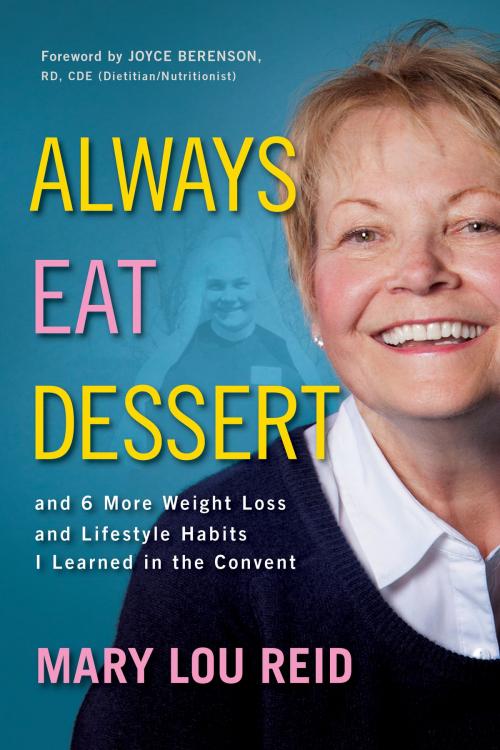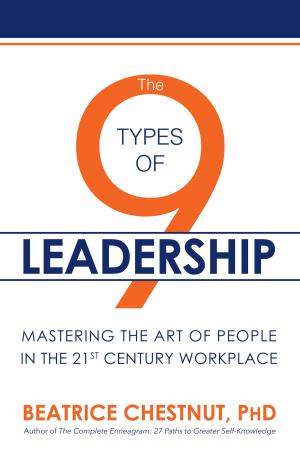Always Eat Dessert...
and 6 More Weight Loss and Lifestyle Habits I Learned in the Convent
Nonfiction, Health & Well Being, Health, Nutrition & Diet, Weight Loss, Religion & Spirituality, Christianity, Christian Life, Biography & Memoir| Author: | Mary Lou Reid, Joyce Berenson, RD, CDE, Richard Klein, PhD | ISBN: | 9781682616680 |
| Publisher: | Post Hill Press | Publication: | April 17, 2018 |
| Imprint: | Language: | English |
| Author: | Mary Lou Reid, Joyce Berenson, RD, CDE, Richard Klein, PhD |
| ISBN: | 9781682616680 |
| Publisher: | Post Hill Press |
| Publication: | April 17, 2018 |
| Imprint: | |
| Language: | English |
When I entered the convent, I was eighteen, heavyset, and lacking self-confidence. I planned to stay forever, living an idealistic life devoted to God. Perhaps deep down I was looking for one solution to all of life’s decisions and ambiguities while forging ahead despite parental disapproval. But the years I spent in the convent transformed me in many ways. Without “dieting” at all, I practiced time-tested weight management principles because that’s just part of convent life. Dinner was a predetermined portion of a predetermined food. The only thing that kept me from being ravenously hungry was dessert.
Eventually I left the convent—and fifty pounds—behind. I have never regained those pounds, because my life changed.
The “Convent Diet” really isn’t a diet at all. It is a way of looking at food and dealing with life. Food becomes a friend instead of an enemy. Negative diets, full of “do nots” and “should nots” may work for a short time, but they cannot last a lifetime.
The Convent Diet works for everyone because it’s about creating your own personal diet. The key to losing weight and keeping it off is to make your eating plan your own. The Convent Diet is neither trendy nor a magic bullet, and for most it takes some trial and error, but it works!
Even now, fifty years later, I still eat dessert every day. However, there are three musts for success with The Convent Diet:
- Determination: to create good habits and to establish and practice a routine
- Tenacity: to stick with it and start again, as many times as is necessary
- Ability to face stress: to stare down “the elephant in the room” created by our times
I call my tips the “Seven Holy Habits”: visualization, always eat dessert, don’t count calories (but calories count), it’s okay to be a couch potato, don’t diet while eating out, forget “fake” food, and take time for yourself.
It worked for me. It will work for you too.
When I entered the convent, I was eighteen, heavyset, and lacking self-confidence. I planned to stay forever, living an idealistic life devoted to God. Perhaps deep down I was looking for one solution to all of life’s decisions and ambiguities while forging ahead despite parental disapproval. But the years I spent in the convent transformed me in many ways. Without “dieting” at all, I practiced time-tested weight management principles because that’s just part of convent life. Dinner was a predetermined portion of a predetermined food. The only thing that kept me from being ravenously hungry was dessert.
Eventually I left the convent—and fifty pounds—behind. I have never regained those pounds, because my life changed.
The “Convent Diet” really isn’t a diet at all. It is a way of looking at food and dealing with life. Food becomes a friend instead of an enemy. Negative diets, full of “do nots” and “should nots” may work for a short time, but they cannot last a lifetime.
The Convent Diet works for everyone because it’s about creating your own personal diet. The key to losing weight and keeping it off is to make your eating plan your own. The Convent Diet is neither trendy nor a magic bullet, and for most it takes some trial and error, but it works!
Even now, fifty years later, I still eat dessert every day. However, there are three musts for success with The Convent Diet:
- Determination: to create good habits and to establish and practice a routine
- Tenacity: to stick with it and start again, as many times as is necessary
- Ability to face stress: to stare down “the elephant in the room” created by our times
I call my tips the “Seven Holy Habits”: visualization, always eat dessert, don’t count calories (but calories count), it’s okay to be a couch potato, don’t diet while eating out, forget “fake” food, and take time for yourself.
It worked for me. It will work for you too.















